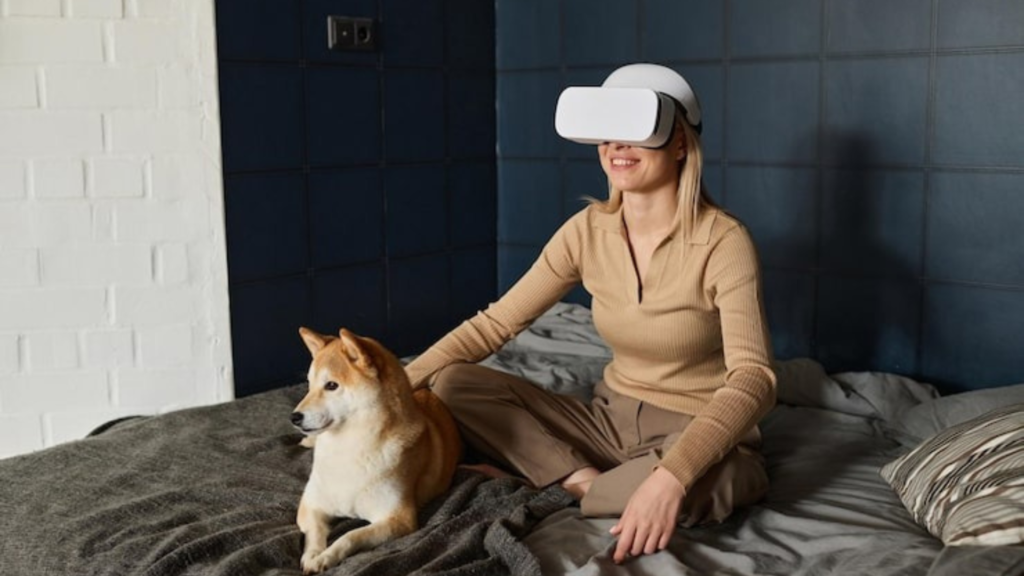As these may either be a collar, harness or a small sensor used to attach to the body of the animal, they provide the possibility of capturing data on its activity, vital signs and patterns of behaviours. With dogs and cats, persistent monitoring with wearables is not only of value to the owners, but is also of value to the veterinary team in better diagnosis and personalized treatment. How precisely do they work? What kinds of wearable tech exist? This article covers how tech gadgets are transforming life. Dog and cat wearables measure and monitor.
In real time physiological and activity data. The devices usually are linked to a mobile application or cloud service where the pet owner and veterinarian can see data gathered and get notifications. Wearables come in many forms with different applications such as tracking physical activity, vital-sign sensors, GPS tracking devices, sleep analysers, among others. Human activity trackers are closely related to those of human beings. They count the steps of the animal, exercise, and sleep patterns, which create an overview of the animal activity level and well-being.
Understanding Wearable Devices for Pets

Of the devices that may indicate symptoms of inactivity or anxiousness. Activity monitors are quite close to those of humans. They quantify the number of steps that the animal walks, exercising time, and sleeping habits giving an overview of its activity level and well-being. The devices will be aimed at keeping the heart rate, respiratory rate, and the body temperature of the animal. They are particularly beneficial in cardiac, and respiratory pathologies because the patient can be monitored.
The critical values constantly. This assists in identifying problems at early stages and controls the effectiveness of treatments. With the help of GPS, the owner of the animal can always know where he is. This aspect is especially beneficial to pets that have access to the outdoors or worse, left unattended. Moreover, the devices are able to capture changes in behavior which may include excessive barking or meowing to enable them to detect anxiety or stressing issues.
Benefits of Animal Health Monitoring

Even glucose monitoring in diabetic animals has become possible in some of the advanced devices. Other wearables are the sensors, which are able to identify the biomarkers in sweat or on the skin, and the real-time information is provided concerning the metabolic status of the animal. As an example, a wearable technology can tell whether the dog or cat is scratching over the wound or if the owners are at an activity level that is too low and this may indicate.
The occurrence of pain or infection. Monitoring devices may assist in keeping track of the animal after it has undergone surgery, as this will allow evaluating whether there are any complications. The example of such device is the wearable device, which will sense whether a dog or cat is scratching its wound or that its activity level is lower than it should. This may be indicative of pain or infection. Even with the opportunities, there are a few issues that may accompany the use of wearable technology on dogs and cats: Price: High-tech wearables are often expensive which can be a limitation to owning.
Pet-Friendly Tech Gadgets for Your Furry Family Member

Such wearables with other pet owners. Animal tolerance Not every dog and cat copes with wearing a device around their collar or body, and those that are more sensitive in particular. Behavior and activity level variability between individual animals may also cause an impact on the data. Internet dependency Most of the wearables are lacking something without an internet connection to transmit someone data to the cloud side or the mobile.
However, this application may pose a problem in regions with poor connectivity. Although this is beneficial, wearable technology drawn on dogs and cats has several issues we should consider Cost The wearables may be costly and this may reduce accessibility of high-tech wearables in pet owners. Animal tolerance Not every dog and a cat is easy to accustom to the use of a device on a collar or a body, and this is particularly true of the more sensitive ones. Interference and accuracy.

Data can also be affected by variability in individual animals of behavior and activity level. Internet dependency The majority of the wearables need an internet connection to transmit data to a cloud or a mobile app, and this should be considered a drawback in regions with limited connectivity. Wearable technology in the veterinary industry is catching up. As they become more common and more accurate, human-accessible devices may take on a significant part in preventive care, in the treatment of chronic illnesses, and in increasing the health of the lives of dogs and cats.
Moreover, artificial intelligence will allow computerized devices to interpret the obtained data better and create advance warnings regarding possible health complications. We want the best of our pets and environmental enrichment is becoming more and more of a consideration. We were able to step-up as simple collar and toy to the most technologically advanced world we live in today and of course in the welfare of our dogs, among many others. In this article we shall discuss how technology is transforming pets environmental enrichment and look at some of the more recent discoveries in this area.
Comments
Post a Comment